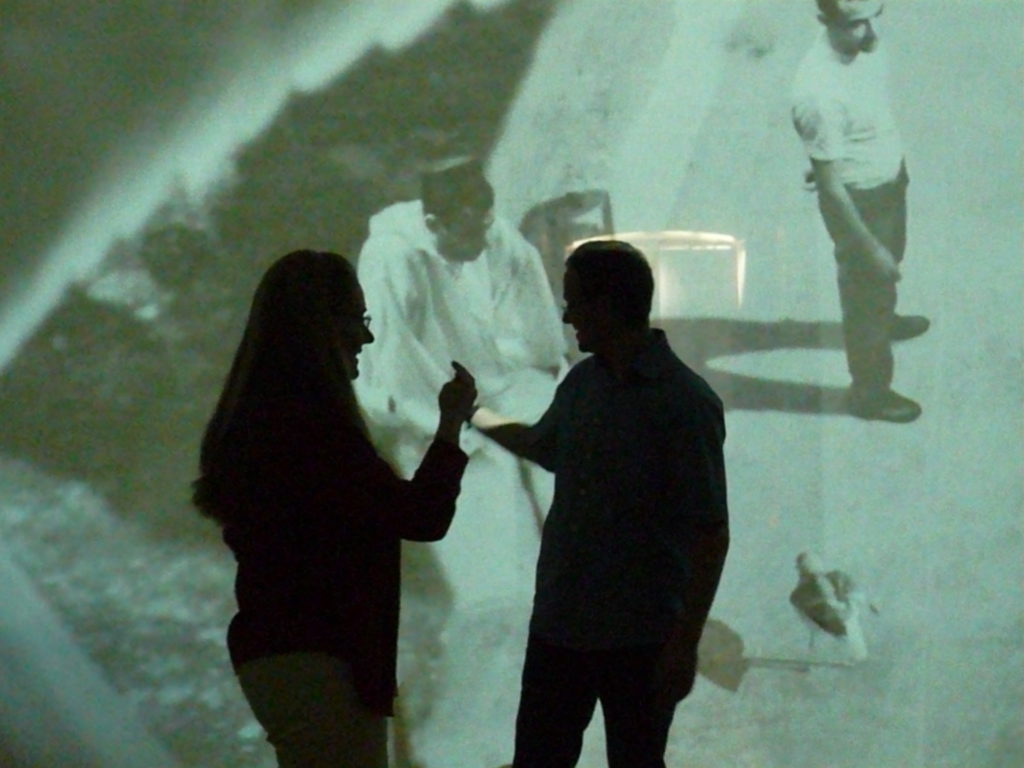Meaning for the Museum Visitor
In the moment of viewing art in a museum, the visitor experiences himself as a subject. He is surprised, attracted to, released from or bored by a particular work. Boris Groys describes this access to one’s own subjectivity as ˝the actual art product˝ that occurs in the museum space ˝in the act of pure viewing – not in time, but in the moment˝ (Groys, 1999). eMotion makes these performative moments of ˝becoming art˝ visible. eMotion shows the process of perception as a creative process; the moments of attraction and rejection, experience in the museum field itself, are visualized.

In the installation aspects of the subconscious while viewing art are made visible in a virtual world, thereby changing the consciousness of the viewer. The physical, mental and emotional activities influence the design of the work.
If you understand art perception as a process in which the possibility of self-understanding is immanent, then feedback generates a concrete surplus value for the active visitor. Through response, self-reflection is supported and the visitors receive the possibility to sharpen their attentiveness towards their own experience and the effect of art. In the installation, despite the scientific and artistic abstraction, the form of representation is suitable to individuals’ subjectivity.
Meaning for Science
In addition to results from artistic research beingmade visible and audible in the installation, the data is analyzed scientifically. On this scientific level, the focus is on approaches from art theory addressing art perception and museums’ effectiveness.

To achieve this, the data assembled in the databank during the project (the paths taken, the length of stay, emotional reactions and questionnaire input) are analyzed. This study gives empirical social science visitor research the unique opportunity to review numerous questions and hypotheses, especially those posed in the last twenty years. The interdisciplinary approach is especially adapted to compare and connect ˝behavioristic˝ and ˝constructivist˝ models of visitor research. Today, the more active role of the art viewer is emphasized in the ˝constructivist˝ shift in the analysis of museum encounters and experience (s. Hein/ Miles debate). However, the direct effect of art on the viewer is almost completely ignored in this discussion. The project eMotion’s elaborate experimental and field study approach enables a reconciliation between the more psychological-experimental and sociological-structural ideas. The results of this multi-disciplinary and multiple-method study could lead to a holistic representation of the interaction between art and the viewer that include the relations between the exhibit and viewer as well as the viewer and social contexts (experiences, expectations and other context variables). Various research approaches on perception and visitors in general would leave their respective discipline ghettos and set aside artificial disciplinary borders (psychological vs. sociological) in observing this research area.
Meaning for Practice
The knowledge generated by this media art project has an equally high level of relevance for museum work for curators, museum teachers, art scientists and cultural managers. We expect to gain extensive data from the tests in museums, the various measurement procedures and the empirical surveys that will be evaluated by the organizers. Questions that can be answered from this evaluation are, for example:
- How does a museum visitor’s background (number of museum visits) correlate with his perception and decision behavior?
- How do the answers to the questionnaire at the terminal correlate with the data of the actual museum visit?
- Does age-specific art perception exist?
- Does gender-specific art perception exist?
- What influence do curatorial concepts have on the process of perception?
- What influence does the type of presentation have on the process of perception?
- What influence does information dissemination have on the process of perception?
- How does a visitor’s background correlate with the process of perception?
- How does a visitor’s expectations correlate with the process of perception?
- Is there an ˝ideal˝ path through the rooms, independent of the conceptual placement of the works?
- What patterns of length of stay, walking speed or spatial behavior are identifiable in the movement and perception profiles?
- and many more.
